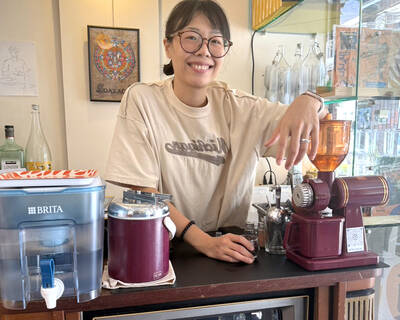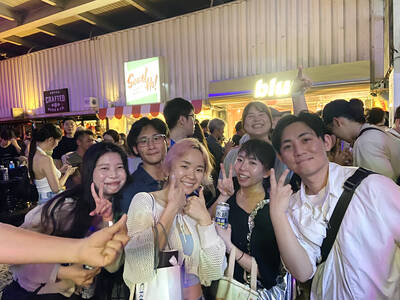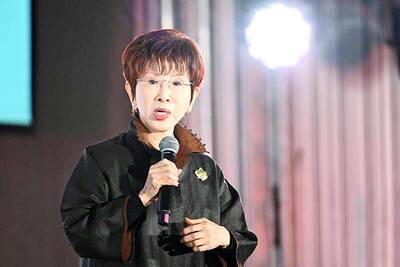Pop stars are constantly threatening to design clothing lines, but with the exception of Justin Timberlake, Sean Combs, or Gwen Stefani, they seldom do more than daydream aloud about their hypothetical companies on Access Hollywood. Then there’s Lady Gaga.
The pantless pop wonder has not only been talking about starting her own clothing line, but true to form, she envisions her designs as the art of the future.
“My intention is to one day have the Lady Gaga exhibit at the Museum of Modern Art,” she told People magazine.
Not since Madonna’s early 1980s arrival has a pop star’s success been so closely tied to her wardrobe. Lady Gaga, a native New Yorker born Stefani Joanne Angelina Germanotta 23 years ago, has created her own superstar reality by arriving at events dressed like a good-time Judy Jetson, eschewing pants, using mirror-covered bras as formal wear, or carrying a tea cup around London as if it were a prized Birkin bag. She began all of this before her album, The Fame, produced any hits (you know Gaga best for Poker Face or Just Dance.) In other words, she started dressing like a star before she was one.
It is a brilliant strategy. One quick look at the Billboard Hot 100 singles chart reveals that dance music does not sell records in the US unless you go by a single name (Beyonce, Madonna) or you were a former Mouseketeer (Justin Timberlake, Britney Spears, Christina Aguilera). Otherwise, the charts tend to be filled with hip-hop, rock, American Idol contestants, or Miley Cyrus. What’s a lady to do? Go fashion gaga and get herself noticed, natch, thereby standing out from the pack and getting her music played.
Lady Gaga’s throbbing dance-pop tunes are catchy, but if she pulled up at the airport dressed like Carrie Underwood instead of arriving in a PVC corset and high boots, would she have managed a No.1 hit? Fortunately, we’ll never know.
Those in music and fashion have a habit of liberally borrowing inspiration, and La Gaga is no different. Last week in Boston, she opened for Kelly Clarkson wearing a series of her own designs — which she acknowledges are inspired by some of her favorite designers. But to say they were inspired by them may be a bit of a stretch. Her infamous bubble dress is a full-on knock-off of a Hussein Chalayan 2007 runway dress. But to have a young pop star so smitten with avant garde fashion is an unusual proposition. Hip-hop artists have a habit of latching on to luxury labels — this means you, Kanye — but to have a young dance music singer emerge from New York’s art and party scene and speak of her love of Valentino and Karl Lagerfeld is not an everyday event.
“This is how I am all the time,” she casually told the London Times as she strutted like a tarted up pigeon in a Thierry Mugler-inspired black rubber dress decked out with gold origami pyramids before a show. “You’ll never see me in flip-flops and a T-shirt.”
She has not only distilled looks from the runway, but also from fellow performers. Much like her musical origins, Lady Gaga’s stylistic origins can be traced back to Madonna, Aguilera, Kylie Minogue, Stefani, and even the original grandmothers of shock-pop dressing: Cher and Wendy O. Williams. But where Madonna and mid-career Aguilera seemed serious about presenting themselves as objects of sexual desire, Lady Gaga’s take on sex feels more like an art school project. Her music hints at sex, and her look is built around showing skin, but it’s all tongue-in-cheek, like when she coos: “I’ll get him hot, show him what I’ve got” on Poker Face.
Her style influence is in its infancy, but at the Boston show last week, there were packs of young women toying with Gaga-esque touches to their wardrobes such as high skirts and exaggerated eye makeup, and she’s already amassed the required gay following. Perhaps more of her influence could be seen earlier this month when Madonna arrived at the Costume Institute Gala in New York looking like a dominatrix dressed like a blue satin Easter bunny that was running away to join the circus. It was the kind of outfit only one other blonde — who also speaks in a measured, faux-British accent — could possibly pull off: Lady Gaga.
What will a clothing line from Lady Gaga look like? She’s been coy at giving specifics, but she would have a difficult time finding a market for disco ball bras and futuristic, butt-baring micro minis. More likely, she and the Haus of Gaga, her creative team that she is trying to model after Andy Warhol’s Factory, would produce slightly more marketable, but no less kooky ensembles based on some of the Lady’s key looks. Which means girls will possibly be wearing knock-offs of knock-offs as they practice speaking like a British robot wearing platinum wigs. Regardless of how she handles a clothing line, it will be anything but middle-of-the-road.

Cheng Ching-hsiang (鄭青祥) turned a small triangle of concrete jammed between two old shops into a cool little bar called 9dimension. In front of the shop, a steampunk-like structure was welded by himself to serve as a booth where he prepares cocktails. “Yancheng used to be just old people,” he says, “but now young people are coming and creating the New Yancheng.” Around the corner, Yu Hsiu-jao (饒毓琇), opened Tiny Cafe. True to its name, it is the size of a cupboard and serves cold-brewed coffee. “Small shops are so special and have personality,” she says, “people come to Yancheng to find such treasures.” She

Late last month Philippines Foreign Affairs Secretary Theresa Lazaro told the Philippine Senate that the nation has sufficient funds to evacuate the nearly 170,000 Filipino residents in Taiwan, 84 percent of whom are migrant workers, in the event of war. Agencies have been exploring evacuation scenarios since early this year, she said. She also observed that since the Philippines has only limited ships, the government is consulting security agencies for alternatives. Filipinos are a distant third in overall migrant worker population. Indonesia has over 248,000 workers, followed by roughly 240,000 Vietnamese. It should be noted that there are another 170,000

Hannah Liao (廖宸萱) recalls the harassment she experienced on dating apps, an experience that left her frightened and disgusted. “I’ve tried some voice-based dating apps,” the 30-year-old says. “Right away, some guys would say things like, ‘Wanna talk dirty?’ or ‘Wanna suck my d**k?’” she says. Liao’s story is not unique. Ministry of Health and Welfare statistics show a more than 50 percent rise in sexual assault cases related to online encounters over the past five years. In 2023 alone, women comprised 7,698 of the 9,413 reported victims. Faced with a dating landscape that can feel more predatory than promising, many in

Former Chinese Nationalist Party (KMT) chairwoman Hung Hsiu-chu’s (洪秀柱) attendance at the Chinese Communist Party’s (CPP) “Chinese People’s War of Resistance Against Japanese Aggression and the World Anti-Fascist War” parade in Beijing is infuriating, embarrassing and insulting to nearly everyone in Taiwan, and Taiwan’s friends and allies. She is also ripping off bandages and pouring salt into old wounds. In the process she managed to tie both the KMT and the Democratic Progressive Party (DPP) into uncomfortable knots. The KMT continues to honor their heroic fighters, who defended China against the invading Japanese Empire, which inflicted unimaginable horrors on the